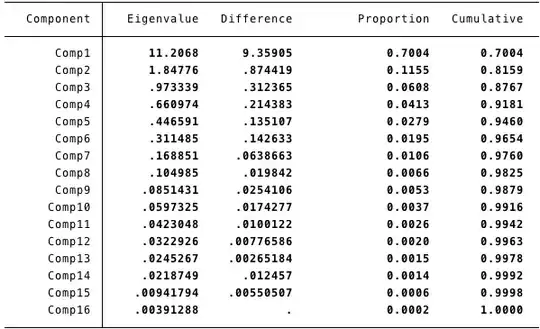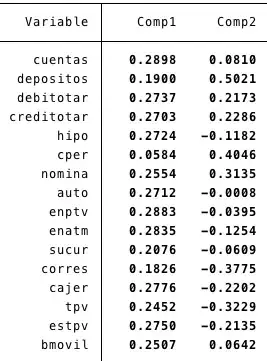For my undergrad thesis I wanted to build a multidimensional index of financial inclusion that would include variables of access and use of financial services in the states of Mexico. I have a set of 16 variables for 32 observations. Since financial inclusion itself can't be quantified, I was told PCA would be the right way to build an index with these related variables.
I want to achieve something similar to this: https://www.bis.org/ifc/publ/ifcb47p.pdf
What I can't seem to understand is how I am supposed to "normalize the weights to sum 1" so I can tell what's the percentage of the total index determined by each variable.
I get the following results when doing the PCA:


I would extremely appreciate if someone could help me out figure this or point me to a book or paper that can elaborate on the subject, and also advise me if PCA is the correct methodology for I want to achieve or if my attempts are nonsensical.
Thanks!